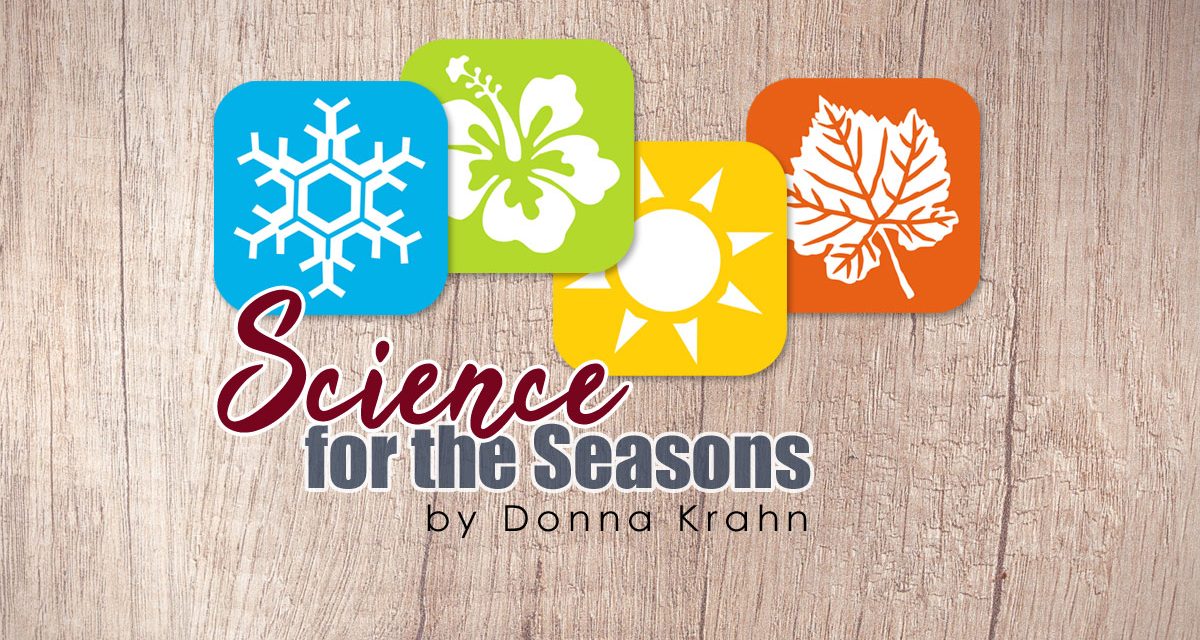While science is a subject that many teach from textbooks, it doesn’t have to be limited to the classroom. It’s always a good idea to move away from the texts and the classroom to do some seasonal learning. I used to teach science at a private Christian school, and the textbook was my framework for the academic year; it’s good to have a plan. It wasn’t unusual, however, to deviate from the scheduled textbook lessons to do something that had its context in the season or when an opportunity would arise.
One year, a Monarch caterpillar made its way into our classroom through an accidental ride on a milkweed plant. It crawled off the plant and formed its chrysalis at the bottom of a bulletin board. This became a learning opportunity. We studied and learned about the life cycle, what they ate, and what to expect when it hatched. We left the chrysalis undisturbed, and one morning came to the classroom to see a beautiful Monarch Butterfly flying around our classroom. We made nectar for the butterfly to eat until it was strong enough to head south. One sunny fall day, we released the butterfly and it flew straight south without hesitation. What an amazing lesson for my students!
We are in the autumn season, and there are plenty of things to pursue. Leaves are always a popular topic and the changing to fall colors. Why do they change and what else is going on in the tree? Make your own maple syrup. It’s the time of year to tap the trees. You can do short lessons on how to tap a tree and how to make the syrup. We did this activity by having someone show us how to make the spickets, how to drill the hole, and then see the sap coming from the tree. We then boiled down the sap to make our own syrup and eat it. How many gallons of sap does it take to make a pint of syrup? Did you know that you can tap any kind of maple tree, different types of trees in the maple family produce slightly different taste? Another idea for fall would be to follow a pumpkin from plant to pie – what a tasty study!
Winter will be here before you know it, and there are some great fun activities to enjoy. Night sky viewing is the best in the colder months. The sky is so clear that you can see much more. If you have a telescope, haul it out and get it set up for some of the best views you’ll see all year. Get a constellation map or star finder to help you locate constellations and key stars in the night sky. I use a free app on my phone that helps me find objects in the night sky. This can be used no matter what time of year or in what hemisphere you live. You’ll want to bundle up against the cold, but it is well worth it! If you like to play with snow, try making snow candy just like in the book Little House in the Big Woods. This is a good time to talk about the properties of water. Maybe visit a frozen pond and study the life beneath the ice. Weather is always a good seasonal topic. In winter you can learn about where snow comes from; why it’s snow and not rain; why do we sometimes get freezing rain? If you live in an area where animals abound, learn to identify different tracks in snow, or go on a nighttime hike when there is a full moon and observe the silent world that happens after dark.
Spring will be here before you know it. New life begins. We used this time of year to hatch eggs, both ducks and chicks, and learn about their life cycles. We found a gentleman who supplied us with fertile eggs and then them take them back to him after they hatched and grew a little. We learned about candling the egg to see if there was an embryo and learned about their development and types of feathers, and how to take care of them – they can be quite messy! This was always a fun project.
We learned about the life cycle of praying mantises after capturing 2 of them. The female ate the male, and then laid her egg sack (ootheca), and we were able to watch the tiny nymph mantises emerge from the egg sack. This is a wonderful opportunity to study mantises (there is a wide variety of species) and a good time to learn about metamorphosis – complete and incomplete.
Spring is the perfect time to learn about anything living. Whether birds, insects, or plants, spend some time getting to know the emerging springtime wonders.
Don’t forget about summer. It seems a long way off right now but start thinking about fun projects that can only be done in summer. Do sun prints and learn about the temperature of the sun, UV rays, shadows, and expand to learning about the solar system and all that it includes. Take advantage of warmer weather to collect interesting rocks, learn their types and names, and do a geology study. Take advantage of the science that is around you all the time. Look in your backyard at worms or plants that are growing there. Visit nature centers and parks. Take neighborhood walks and hikes. We would do nature scavenger hunts by picking things that we had learned about during the school year and try to find them outdoors. There is no end to the types of things you can do during warmer weather. Just follow your child’s interests.
The seasons afford multiple opportunities for learning, so why not take advantage? Your children will remember the experiences long after they forget the textbook information.
~ Donna





